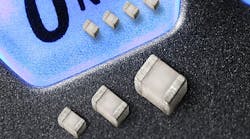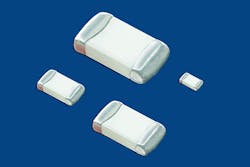For many high-power RF applications, the “Q factor” of embedded capacitors is one of the most important characteristics in circuit design. Often expressed as a mathematic formula, the Q factor represents the efficiency of a given capacitor in terms of its rate of energy loss.
Although many low-power applications do not require consideration of the capacitor’s Q factor, energy losses can increase significantly at higher frequencies. That means performance issues can arise even in low-power circuits.
Johanson Technology addresses this issue for high-power applications by offering high-Q capacitors, which are characterized as having ultra-low equivalent series resistance (ESR). In addition to minimizing energy loss, the high-Q capacitors reduce thermal noise caused by ESR to assist in maintaining desired signal-to-noise ratios.
To achieve the lowest energy losses, Johanson leverages the lowest loss dielectrics, inks, and electrode options. Although most low-cost commodity capacitors utilize nickel electrodes, it’s a poor conductor known for high loss at high frequencies.
Silver and copper electrodes perform better for most high-Q applications. For the highest-power RF applications, silver electrodes are incorporated in Johanson’s E-Series multi-layer RF capacitors. These capacitors are available in EIA-standard 1111, 2525, and 3838 sizes.
The company offers high-Q MLCC capacitors in both horizontal and vertical electrode orientation configurations when mounted in tape-and-reels. Mounting capacitors in a vertical configuration can effectively extend the usable frequency range of capacitors.
For more information, contact Johanson Technology at (805) 389-1166, e-mail [email protected], or visit the website.


